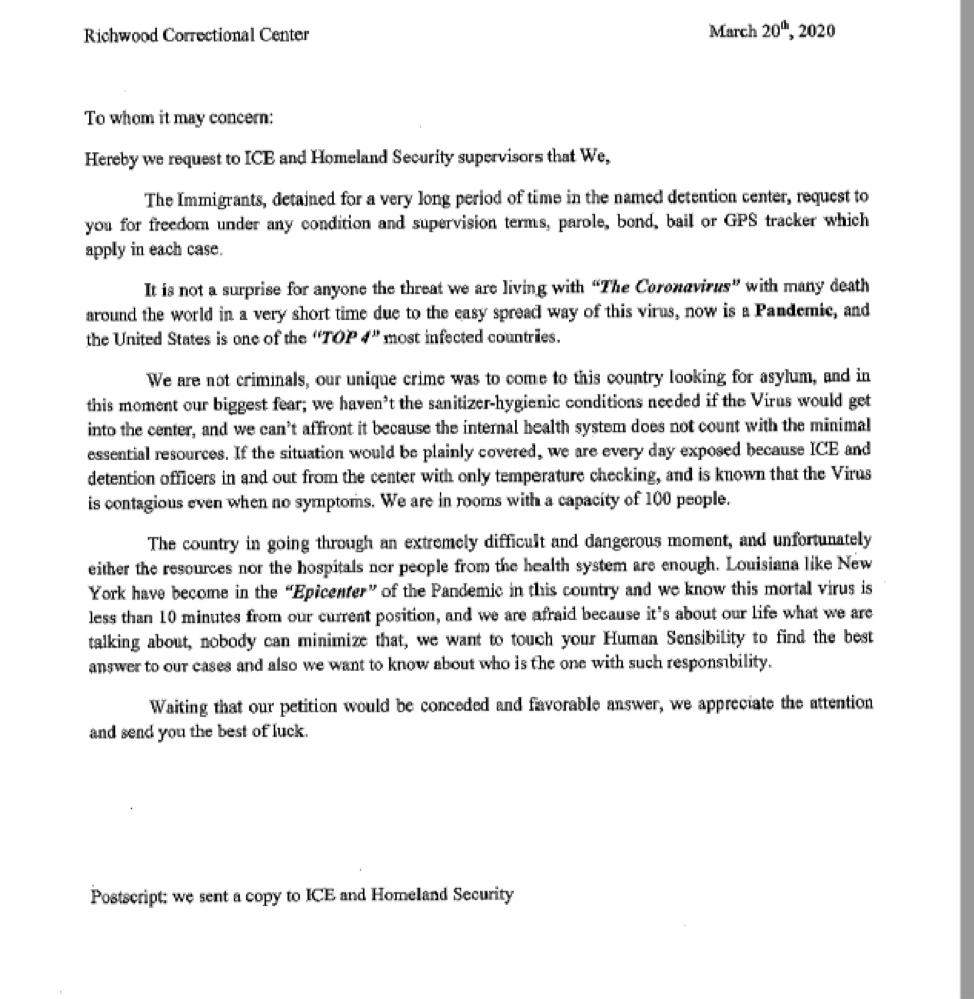by Cindy Knoebel
Yesterday, on April 13th, The Intercept published a scathing article about the COVID-19 crisis and ICE's scrambled, uncoordinated, arbitrary - and often cruel -responses to it.
The article quoted this email comment sent April 8 by an ICE official in Georgia to attorneys with the Innovation Law Lab: "Currently, there is not a precedence within ICE to release detainees due to the COVID-19 pandemic."
Precedence or not, ICE has the power to release immigrants from detention. As of today, ICE has reported 77 cases of the virus among those in its custody, about double the number just five days ago. ICE's Coronavirus website notes that "ICE initially identified more than 550 detainees over the age of 60 or pregnant. Of this population, ICE identified more than 160 individuals for release after evaluating their immigration history, criminal record, potential threat to public safety, flight risk, and national security concerns."
Let's be clear about this: 160 "detainees" - less than one percent of an estimated total of 32,000 detained immigrants - have been deemed vulnerable enough to be released. An April 7, a BuzzFeed article reported ICE confirmed that 160 people have been released.
Meanwhile, calls and letters from people in detention continue to pour in. Though launched only twelve days ago, Freedom for Immigrants' COVID-19 hotline has already logged hundreds of calls, with information regularly being added to its interactive map.
To date, IMM Print has published three letters from detained immigrants: one from Broward Transitional Center in Florida, a second from the Buffalo Federal Detention Facility in New York, and a third from detention facilities in Louisiana. Monday's Intercept article contains yet another, shown below, from the Richwood Correctional Center in LaSalle, LA.

Another April 6 update to the FAQs posted on ICE's Coronavirus website says: "ERO [Enforcement and Removal Operations] decided to reduce the population of all detention facilities to 70 percent or less to increase social distancing." No further information has been provided on releases to date at individual facilities. No information is given about how this reduction would be achieved (i.e., parole grants, deportations, bond grants or humanitarian releases), or nor was a timeframe referenced.
In this deadly time, when the probability for mass infections among people in detention is undeniably high, this type of non-information leaves immigrant rights' organizations, the media and families in the dark about the fate of individuals who continue to live in crowded, unsanitary and unprotected facilities.

